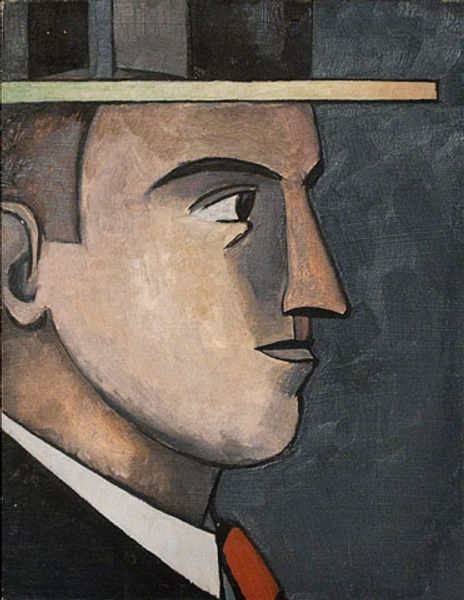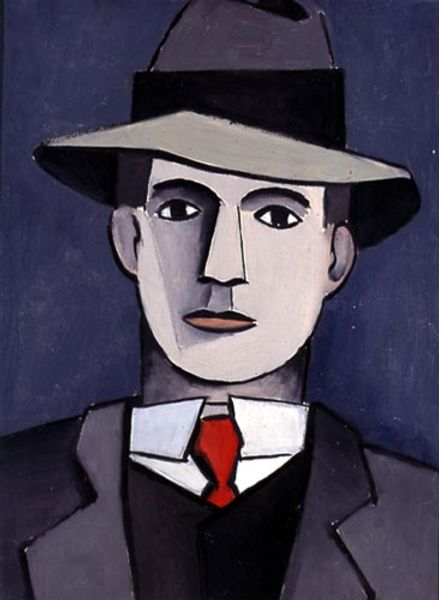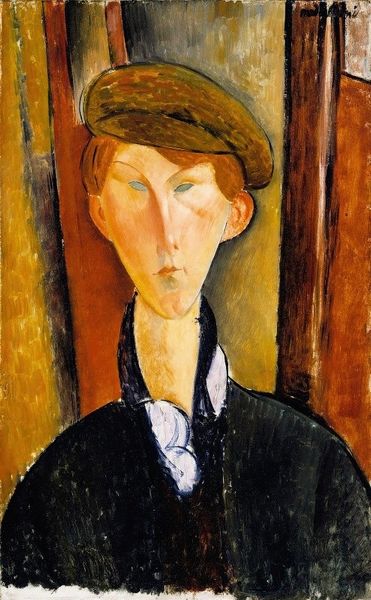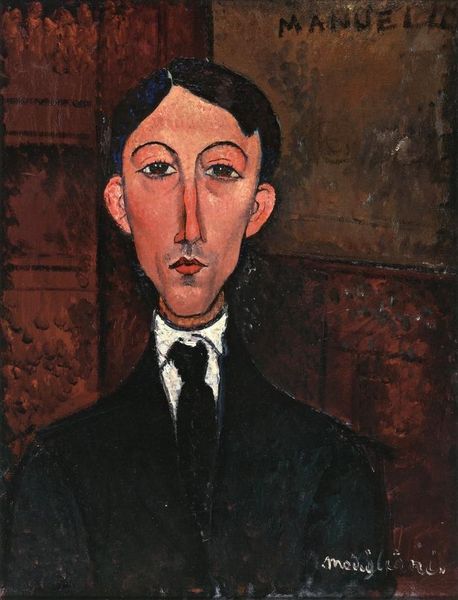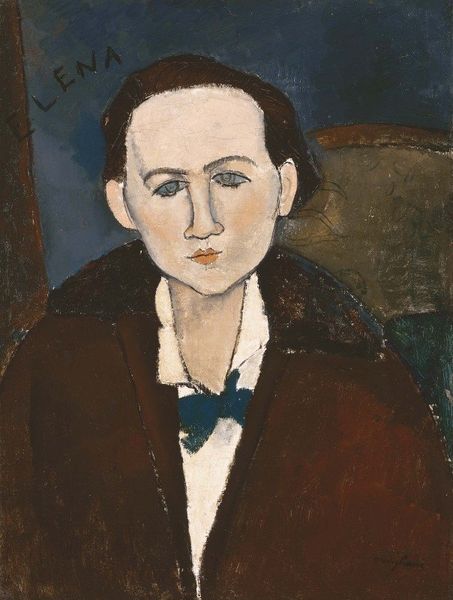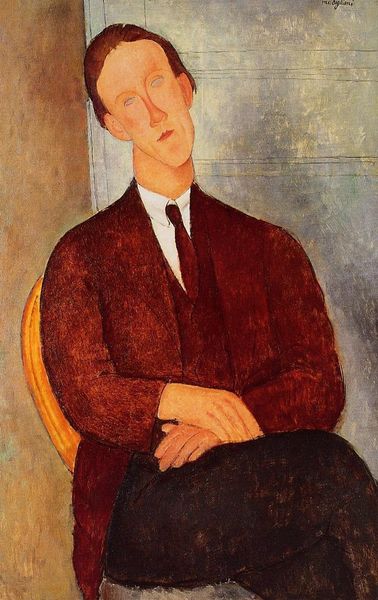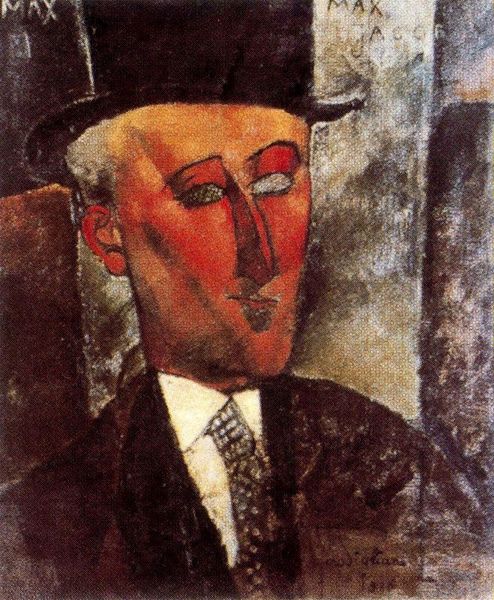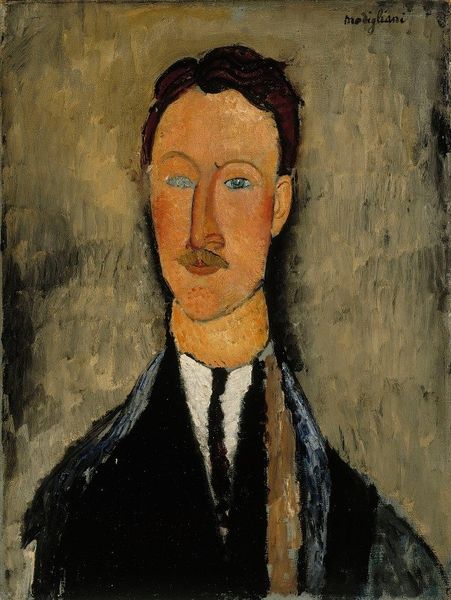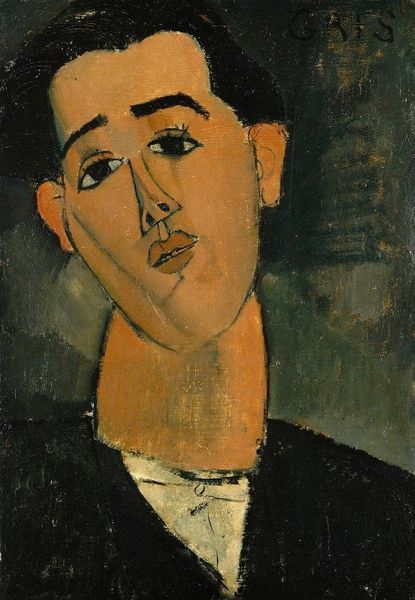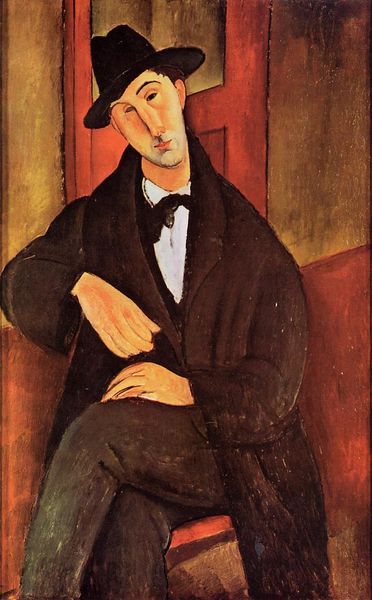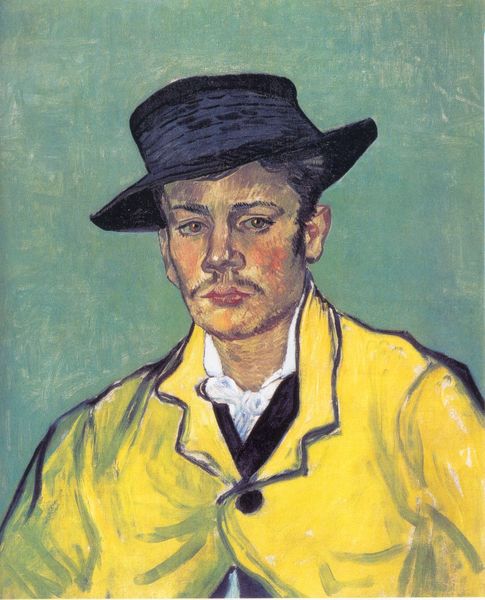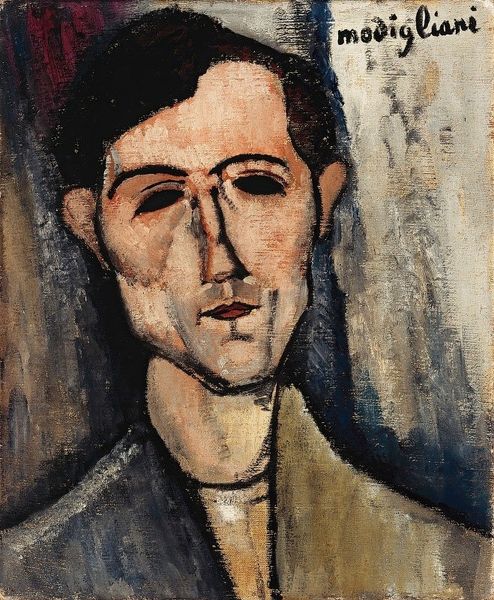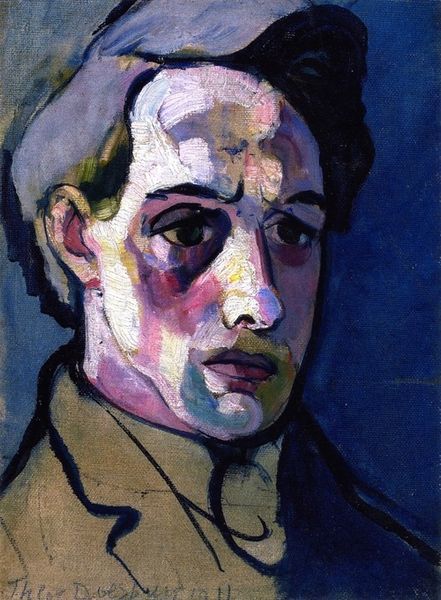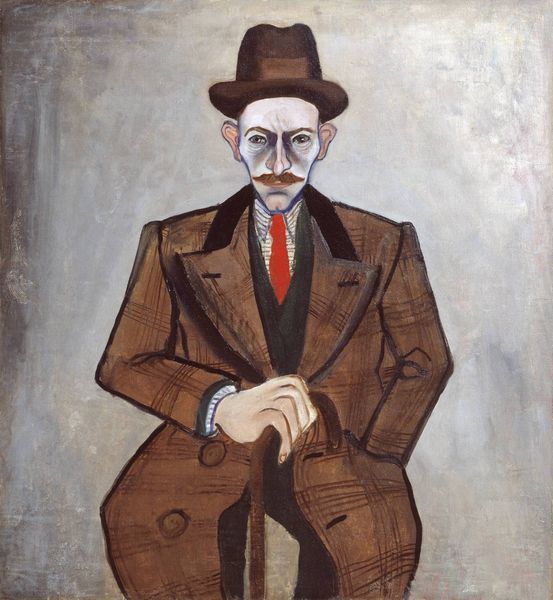
painting, oil-paint
#
portrait
#
painting
#
oil-paint
#
intimism
#
expressionism
#
modernism
Dimensions: 65 x 54 cm
Copyright: Public domain
Curator: Take a moment to observe Modigliani's "Portrait of a Man with Hat," or as it's sometimes known, "Jose Pacheco," painted around 1915. The medium, of course, is oil on canvas. Editor: It’s captivating! There’s something unsettling, yet undeniably elegant, about the elongated features and almost vacant stare. The dark, empty spaces where you expect eyes feel almost like he's wearing a mask. Curator: Interesting. Let's consider Modigliani's materials here. The relatively muted palette suggests a conscious choice. Think about the accessibility of pigments at the time and what they would mean for a rising artist working in Paris. He was perhaps emphasizing form and line over opulent color. Editor: The subtle variations in the tan jacket, the way it catches the light – it’s skillfully done. There's this beautiful tension between the figure's sharp angles and the softness of the fabric. What about the hat, such a ubiquitous piece of menswear, that renders the identity so anonymous? Curator: Exactly! And consider the socio-economic implications. This isn't an aristocratic portrayal; it’s a modern man, possibly a member of the bohemian circles Modigliani frequented. It prompts questions about class, identity, and representation within modern art. Editor: Absolutely! It speaks volumes, this rendering. Perhaps Pacheco was just someone he saw, or perhaps someone more involved in his creative world, a model. I like that tension of not knowing for sure, don't you think? Curator: That ambiguity is key. This painting, on one level, becomes an object – canvas, paint, labor, subject to market forces and display contexts, all contributing to our interpretation today. Editor: Ultimately, for me, the lasting impression is melancholic and thought-provoking. He looks rather haunting, frozen in time. I'm strangely drawn to the almost eerie placidity that defines the painting. Curator: A powerful demonstration, I think, of how material analysis enhances our appreciation for both the artistic skill and the broader cultural conversation this work inspires.
Comments
No comments
Be the first to comment and join the conversation on the ultimate creative platform.
